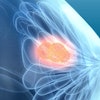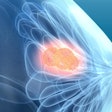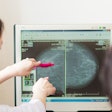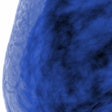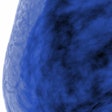
Patients with invasive breast cancer who had low scores on an investigational molecular signature in a new study had similar rates of local recurrence whether or not they received adjuvant radiation therapy after breast-conserving surgery.
According to results of a meta-analysis presented at the San Antonio Breast Cancer Symposium (SABCS), held December 6 to December 10, “many patients will not experience a local recurrence even without radiation therapy,” Dr. Per Karlsson, a professor of oncology at the University of Gothenburg in Sweden, said in a statement.
The results have potential implications for breast cancer treatment, because patients with breast cancer who undergo breast-conserving surgery are currently recommended to receive adjuvant radiation therapy to reduce the risk of local recurrence.
In the study, Karlsson and colleagues evaluated the predictive potential of POLAR (Profile for the Omission of Local Adjuvant Radiotherapy), an investigational 16-gene molecular signature that was developed based on gene expression differences between patients with and without local recurrence after breast-conserving surgery.
Genes included in the signature have known roles in cellular proliferation and the immune response.
The researchers performed a meta-analysis of 623 patients with lymph node-negative, estrogen receptor-positive, HER2-negative breast cancer who were enrolled in one of three randomized clinical trials examining the efficacy of breast-conserving surgery with and without local breast radiation therapy.
The clinical trials included in the meta-analysis were the Swedish SweBCG91RT trial, the Scottish Conservation Trial (SCT), and a trial from the Princess Margaret Hospital (PMH) in Canada. Among the 623 patients in the meta-analysis, 354 were from SweBCG91RT, 137 from SCT, and 132 from the PMH trial.
To evaluate the predictive capability of the 16-gene molecular signature, the researchers analyzed gene expression in patient breast tumor samples and assigned each patient a score; they then examined the impact of radiation therapy for patients with high and low scores. Among the 429 patients with high scores, those who received adjuvant radiation therapy after breast-conserving surgery had a 63% reduction of local recurrence compared with those who did not receive adjuvant radiation therapy, suggesting that adjuvant radiation therapy was beneficial for these patients.
In contrast, for the 194 patients with low scores, there was no significant difference in local recurrence rate between those who received adjuvant radiation therapy and those who did not. After 10 years, 5% of patients who had received radiation therapy experienced a local recurrence, compared with 7% of those who did not receive radiation therapy.
“Currently, we do not have any reliable predictive classifiers to identify patients who might be able to skip radiation therapy,” Karlsson said. “Since radiation therapy can be associated with problematic side effects in some patients, it is of clinical importance to identify those patients for whom radiation therapy can be safely omitted.”
The “POLAR gene profile successfully predicted which patients would and would not benefit from local radiation therapy, thereby identifying a group of breast cancer patients where radiation therapy may be safely omitted after breast-conserving surgery,” Karlsson said, adding, that the gene profile may help mitigate toxicities and improve quality of life for many patients.
The POLAR gene profile will need further validation and additional streamlining before it could be used in the clinic, he noted.



